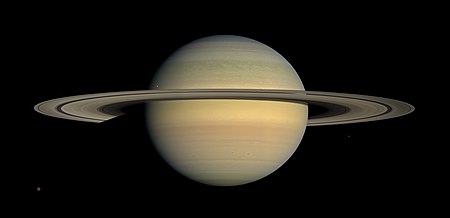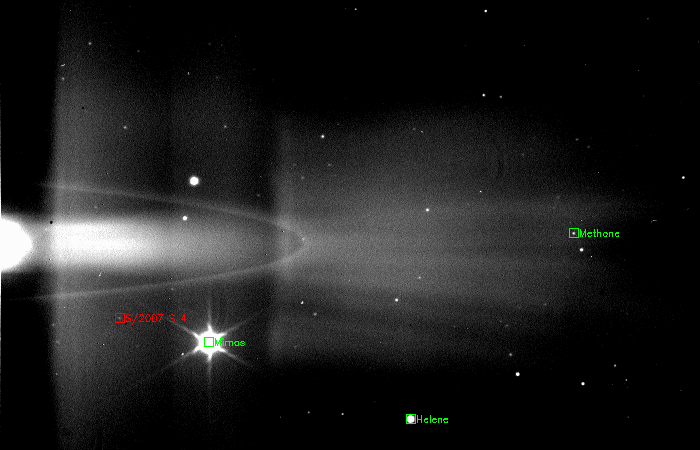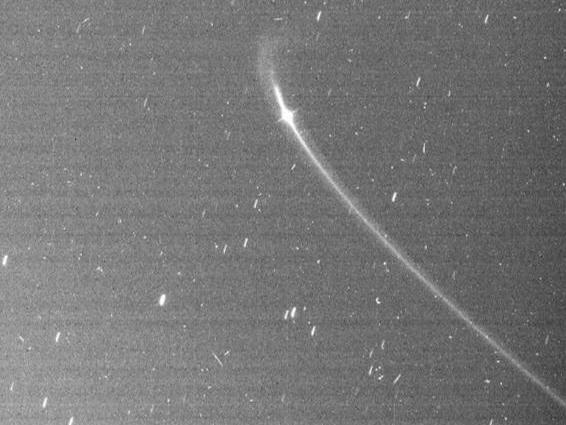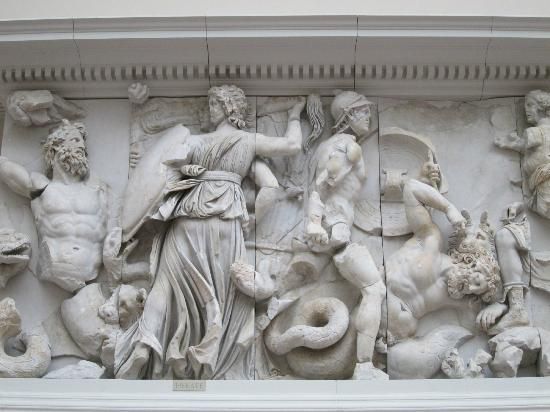While most of the attention is focused on the bang that the bigger moons make, the tiny Alkyonides are also little boxes of surprises themselves. The Anthe moon is one of them. Let us find out more about it.
A Look Into the Saturnian System

Saturn is a gas giant which is the third farthest planet from the Sun. It stands out among the row of planets making up the solar system. Even though it has the most obvious rings, the outer planets Jupiter, Uranus, and Neptune also have their own sets of rings. But none of them have moons greater in number than that of Saturn’s.
Seven of the 82 moons of Saturn have ellipsoidal or round shapes. A total of 24 satellites, including the major seven, are considered regular satellites. They follow their orbits in the same direction as their parent planet (prograde). The other 58 are called irregular satellites as most of them follow a retrograde motion, opposite the direction of Saturn’s rotation.
Aside from the direction of their movements, orbital characteristics and location help us classify the numerous moon of Saturn. One such group is the Alkyonides.
What is an Alkyonide Moon?
The Alkyonides is an exclusive group of Saturn’s tiny moons. The members of this humble trio are the sister moons Anthe (temporarily designated S/2007 S4), Methone, and Pallene. They lie between the orbits of Mimas and the sixth-largest moon of the planet, Enceladus.

The three moons were all recently discovered thanks to the Cassini-Huygens mission. They have a dynamic relationship with the bigger moons close to them, especially Mimas.
Theories surrounding the origin of these moons are also interconnected. It is possible that these small bodies are fragments from either of their bigger neighbors, Mimas and Enceladus. It is also likely that the five of them were from the same swarm of astronomical bodies that once came close to the Saturnian system.

The Anthe Moon
Anthe Moon: Facts and Figures
All About the Name
- Pronunciation – /ˈænθiː/
- Behind the name – Anthē (One of the Alkyonides, the seven daughters of the Giant Alkyoneus)
- Adjective – Anthean
- Other designation – Saturn XLIX
- Provisional designation – S/2007 S 4
Discovery Details
- Discoverer – Cassini Imaging Team
- Discovery date – May 30, 2007
Orbital Characteristics
- Parent Planet – Saturn
- Orbital period – 1.05089 day/s
- Average Orbit Distance – 197,700 km
- Mean Orbit Velocity – 49,767 km/h
- Orbit Eccentricity – 0.0011
- Equatorial Inclination – 0.1° to Saturn’s equator
Physical Features
- Equatorial radius – 0.9 km
- Equatorial circumference – Approximately 5.7 km
- Volume – 3 km³
- Mass – 1.5×1012 kg
- Surface area – 10.18 km²
- Mean density – 0.5 g/cm³
- Surface gravity – 0.00012 m/s²
- Escape velocity – Approximately 2 km/h
- Rotation – Synchronous (assumed)
Anthe Features
Anthe is a small moon of Saturn. The Cassini Imaging Team discovered it in 2007. It was the 60th confirmed moon of the ringed planet and is also referred to as Saturn XLIX.
This small natural satellite of Saturn is among the planet’s Alkyonides. It is a group of tiny moons that orbit Saturn. The trio is situated between the orbits of the two bigger moons, Mimas and Enceladus.
The moon is a relatively new discovery. But we can only expect to obtain more information about its specifics as further studies are conducted and more explorations are carried out.
Did You Know?
Being one of the close neighbors of the Alkyonides, it is interesting to note that Mimas is relatively small compared to other moons.
With a diameter of 396 km, it is the smallest moon with a round body. Conversely, another one of Saturn’s moon, Hyperion, is one of the largest astronomical bodies in the solar system with an irregular shape.
Discovery
Anthe’s discovery was made possible by NASA’s Cassini spacecraft. It remained undetected for years despite the fact that it already appeared in the images sent by the probe when it first reached Saturn in 2004.

The presence of the small moon was detected in images taken on the 30th of May 2007. It was discovered by the Cassini Imaging Science Team. This new finding made them revisit older Cassini images, and there it was, included in some photographs from June 2004.
Did You Know?
The Alkyonides were all discovered by the Cassini-Huygens mission. However, Pallene has a unique case.
Discovered in 2004, astronomers later realized that Pallene was actually photographed years back in 1981. It was seen in a photograph taken by the Voyager 2 probe.
Characteristics
Size
Anthe is the smallest of the three Alkyonides. With a mean radius of 0.9 km or 0.6 miles, it falls behind Methone whose radius is about 1.6 km. It is 2.8 times smaller than Pallene, the biggest of the three, and nearly 2,000 times smaller than our planet’s Moon.
Composition
The composition, geography, and albedo (reflectivity) of the Anthe moon, among others, are still unknown. It is extremely small and no close-up images were taken of it yet.
Since it was just recently discovered, much data still needs to be gathered to identify these important elements. However, with Anthe’s distance to Saturn, scientists assume that it is tidally locked to the planet.
Orbit
Anthe orbits Saturn at a distance of 197,700 km (122,800 miles). It takes for this moon a little more than a day here on Earth (25.22 hours) to complete a trip around the planet.
The larger moon Mimas greatly affects Anthe, as well as Methone and Pallene. This effect is strongest in Anthe considering that it is the smallest of the three. Anthe is perturbed and is in a 10:11 resonance with the much larger Mimas. It moves back and forth which makes its semi-major axis vary by as much as 20 km in a span of two years here on Earth.
Role
Anthe, together with its sister satellites, is believed to be one of the particle-contributing moons of the wide yet diffuse E ring. It is also the source of the Anthe Ring Arc, its co-orbital ring.
Did You Know?
Speaking of Saturn’s E Ring, Enceladus is the major source of material forming this structure. It was found out that this icy moon releases plumes of water vapor in its south pole which makes up the tenuous ring.
Because of its sub-surface ocean, this moon is eyed as one of the most suitable candidates for life in the Saturnian system.
What Does Anthe Look Like?
While the Alkyonide moon Methone was seen up close as an egg-shaped body, much is still unknown about Anthe. In addition to its small size, we are not yet able to look at its surface in great detail.
The best picture that we have of it shows a mere dot of light, an ellipsoidal shape, against darkness. It was taken on January 30, 2016, when Cassini was at a distance of about 119, 369 kilometers.
The Anthe Ring Arc

Just like the other Alkyonides, a ring was also detected in the orbit of Anthe. Called the Anthe Ring Arc, this faint structure has a longitudinal extent that covers approximately 20 degrees.
Micrometeoroid impacts on Anthe blasts off material from the moon’s surface. The events are said to be the main agents that cause the ring-forming particles to be ejected into space. These particles are then confined by the small moon’s 10:11 resonance with its neighbor moon, Mimas.
The partial ring was discovered in June 2007.
Behind the Name
The little moon was temporarily designated S/2007 S 4 after discovery. The permanent name assigned to it was based on one of the seven sisters called the Alkyonides in Greek mythology.
The name “Anthe” means “flowery” in English.
The Alkyonides and Their Giant Father
The Gigantes (Giants) were the offsprings of Gaea (Gaia). The mother goddess conceived them from Uranus’s blood after, their son, Cronus had castrated him.

One of the greatest among the Giants is Alkyoneus (Alcyoneus). He had seven daughters called the Alkyonides. Their names are Methone, Pallene, Anthe, Alkippe, Asteria, Drimo, and Phthonia.
Meanwhile, Cronus and the Titans ruled the world for some time. But then Cronus faced the same fate as his father, Uranus. His children, led by Zeus, raged war against the Titans which overthrown them from power.
This led to the battle called the Gigantomachia or Gigantomachy. The struggle for power was fought between the new rulers, the Olympians, and the Giants. The latter group was led by their mightiest members, Alkyoneus and Porphyrion.
A prophecy was told that with the help of the hero Heracles, the Olympians would be able to defeat the Giants. This was not much of a worry to Alkyoneus as he was immortal as long as he remains in his land.
Unfortunately, Heracles was able to find a way to the giant’s weakness. The hero shot him with his arrow and then dragged him out of his native land. This eventually led to the death of Alkyoneus.
The news broke the hearts of the giants’ daughters. The Alkyonides wanted to end their lives and did so by jumping into the sea. Amphitrite, the sea goddess, felt sorry for the girls so she turned them into halcyons (kingfishers).
Statistical Sources:
- https://en.wikipedia.org/wiki/Anthe_(moon)#cite_note-4
- https://solarsystem.nasa.gov/moons/saturn-moons/anthe/by-the-numbers/
- https://solarsystem.nasa.gov/moons/saturn-moons/anthe/in-depth/
- https://en.wikipedia.org/wiki/Rings_of_Saturn#Methone_Ring_Arc
- https://mythworld.fandom.com/wiki/Giants_(Greek_mythology)
Image Sources:
- Saturn: https://en.wikipedia.org/wiki/Saturn
- Alkyonides (Methone, Pallene, and S/2007 S 4): http://www.monde.de/methone-anthe-pallene.html
- Anthe moon; discovery image: https://en.wikipedia.org/wiki/Anthe_(moon)#cite_ref-rhodanthe_2-0
- Anther Ring Arc: https://en.wikipedia.org/wiki/Rings_of_Saturn#Anthe_Ring_Arc
- Alkyoneus (with Athena, Gaia, and Nike): https://en.wikipedia.org/wiki/Alcyoneus